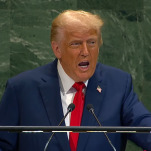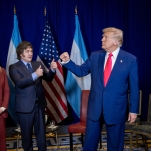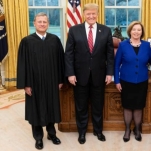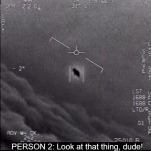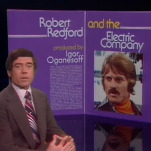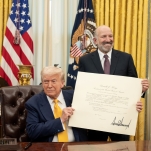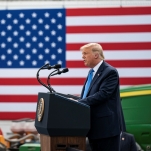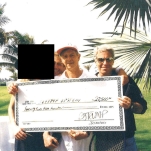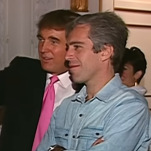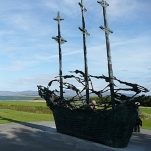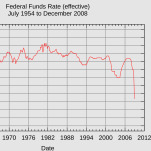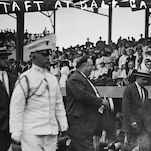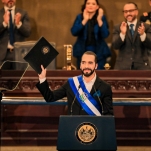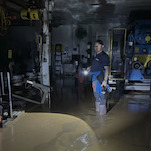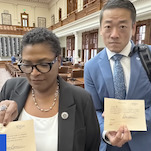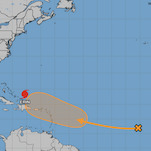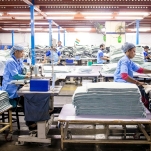This Band Thinks Global and Acts Local
For the Ticuna tribes that live in the Amazon along Brazil, Colombia, and Perú, the Curupira is a spirit that protects the jungle from the bad-intentioned hunters. The Colombian band Curupira, which is performing in New York City this weekend, is comprised of six amazing multi-instrumentalists who base their music on the diverse folk traditions of Colombia: from the Pacific and Atlantic coasts all the way to the tropical grassland plains.
Curupira members say they got the name one day while rehearsing when they got together in the year 2000. “We started humming, and that word just came out,” said Maria José Salgado, gaitera and percussionist of the band. They feel the image of the spirit represents them because he walks with one foot forward and one foot backwards, just like their music, which is ancestral and futuristic, progressive and based on tradition.
Curupira spirit illustration by Elisa Roldán.
The first time I saw Curupira play was this past March, when they opened for Mulatu Astatke in Bogotá for a world music crowd. I must confess it took me a while to get into their music. The combination of folky gaitas (Colombian flutes), the tambora (bass drum), and the alegre (traditional Colombian drum also used by Mitú), the llamador (another traditional drum), and the marimba, mixed with the more aggressive sounds of the electric guitar, bass, and drums was a little overwhelming.
The concept of mixing the traditional and the modern has become popular in what they call the new Colombian music, but the way Curupira does it, including so many instruments and so many rhythms with complicated patterns simultaneously, sets it apart. They are also the pioneers of this kind of musical experimentation, paving the way for others. “Curupira learns and takes its inspiration from the Colombian traditional music, and it experiments with jazz and contemporary music harmonies,” says Maria José. “It sounds like a jungle in the city, like an Escher’s painting, or like an exotic, quantic mix of urban timbres and Caribbean rhythms.”
And it does.
Because this is Curupira: a bet, a cry, a call, a tacit protest. An experiment that challenges the so-called purists by mixing it all, by looking for the pieces of many fading identities in a classist, racist, violent, fragmented country, and bringing them to the light.
In Curupira there’s no masks, there’s no artifice. It’s all raw, ritualistic music that invites us to look back, to relearn, to remember who we are, at the same time it invites us to keep walking forward.
On June 28th, Curupira will have their US debut, and will present their sonic experiment in the River to River festival in New York City, and then at Barbes and at Terraza 7 on July 4th and 5th respectively. Check them out!
-

-

-

-

-

-

-

-

-

-

-

-

-

-

-

-

-

-

-

-

-

-

-

-

-

-

-

-

-

-

-

-

-

-

-

-

-

-

-

-

-

-

-

-

-

-

-

-

-

-

-

-

-

-

-

-

-

-

-

-

-

-

-

-

-

-

-

-

-

-

-

-

-

-

-

-

-

-

-

-

-

-

-

-

-

-

-

-

-

-

-

-

-

-

-

-

-

-

-

-

-

-

-

-

-

-

-

-





